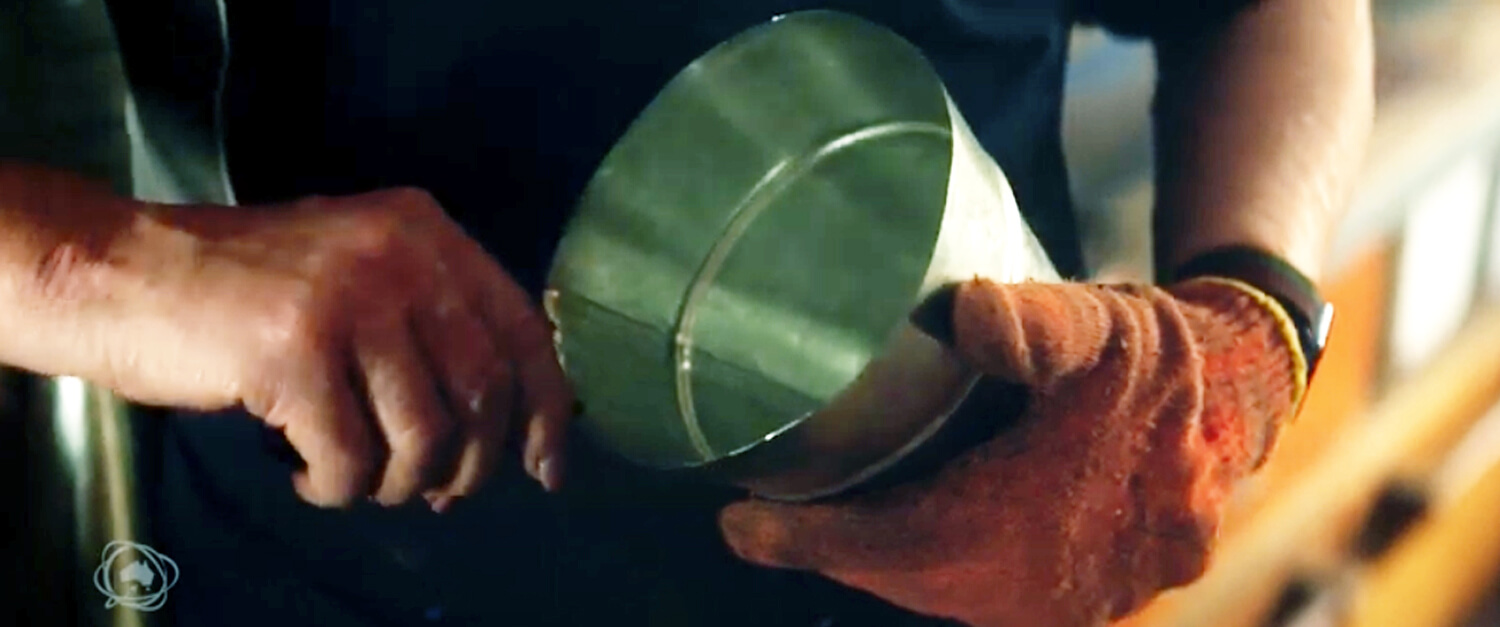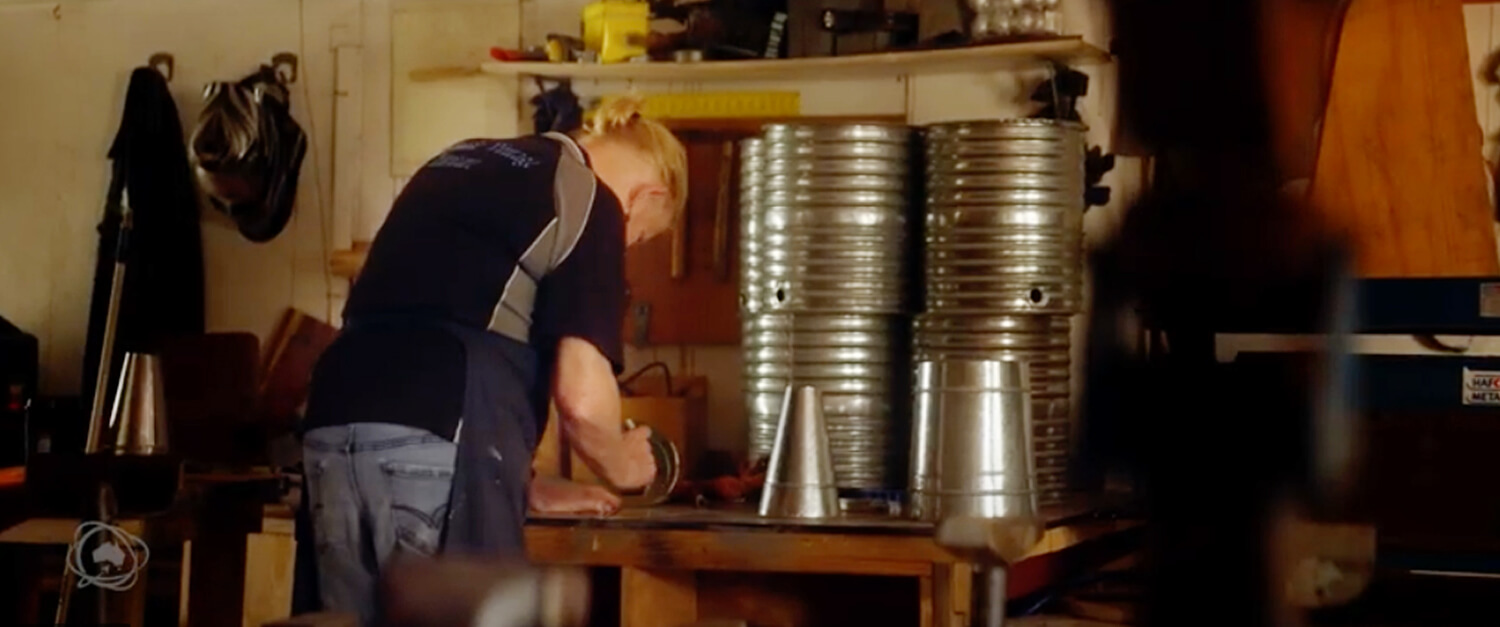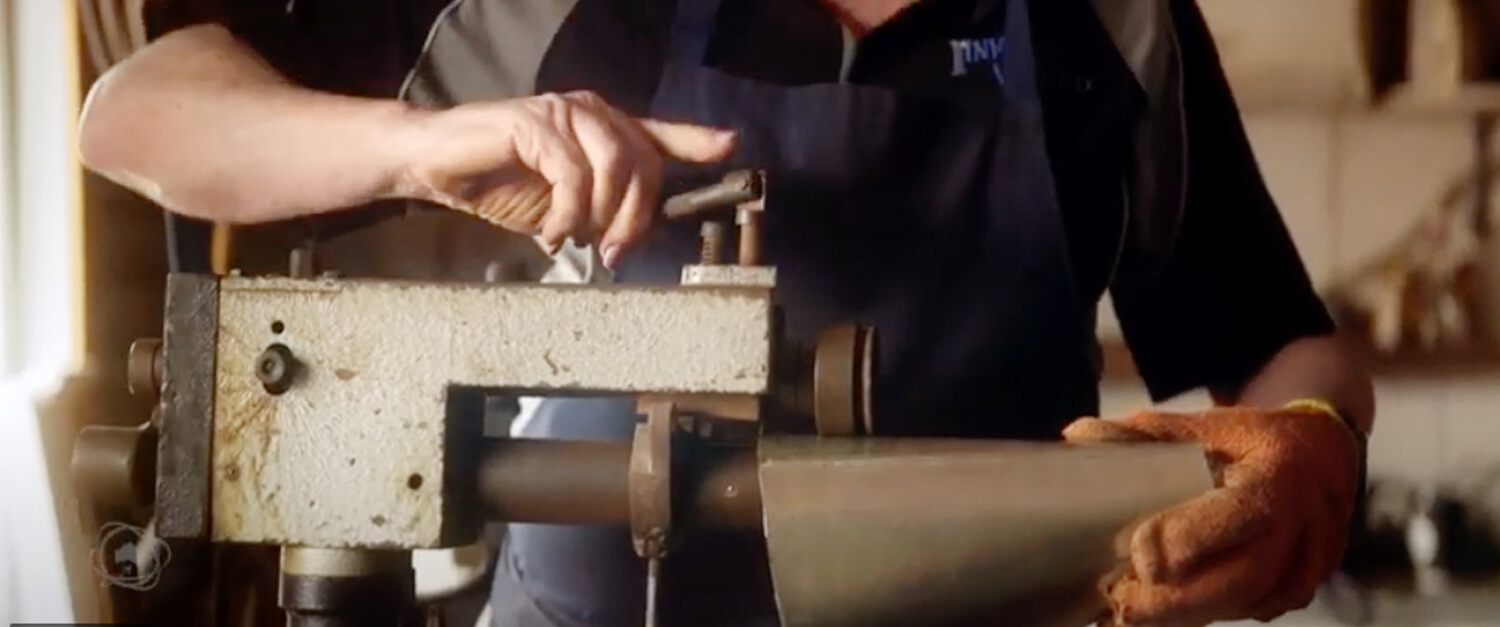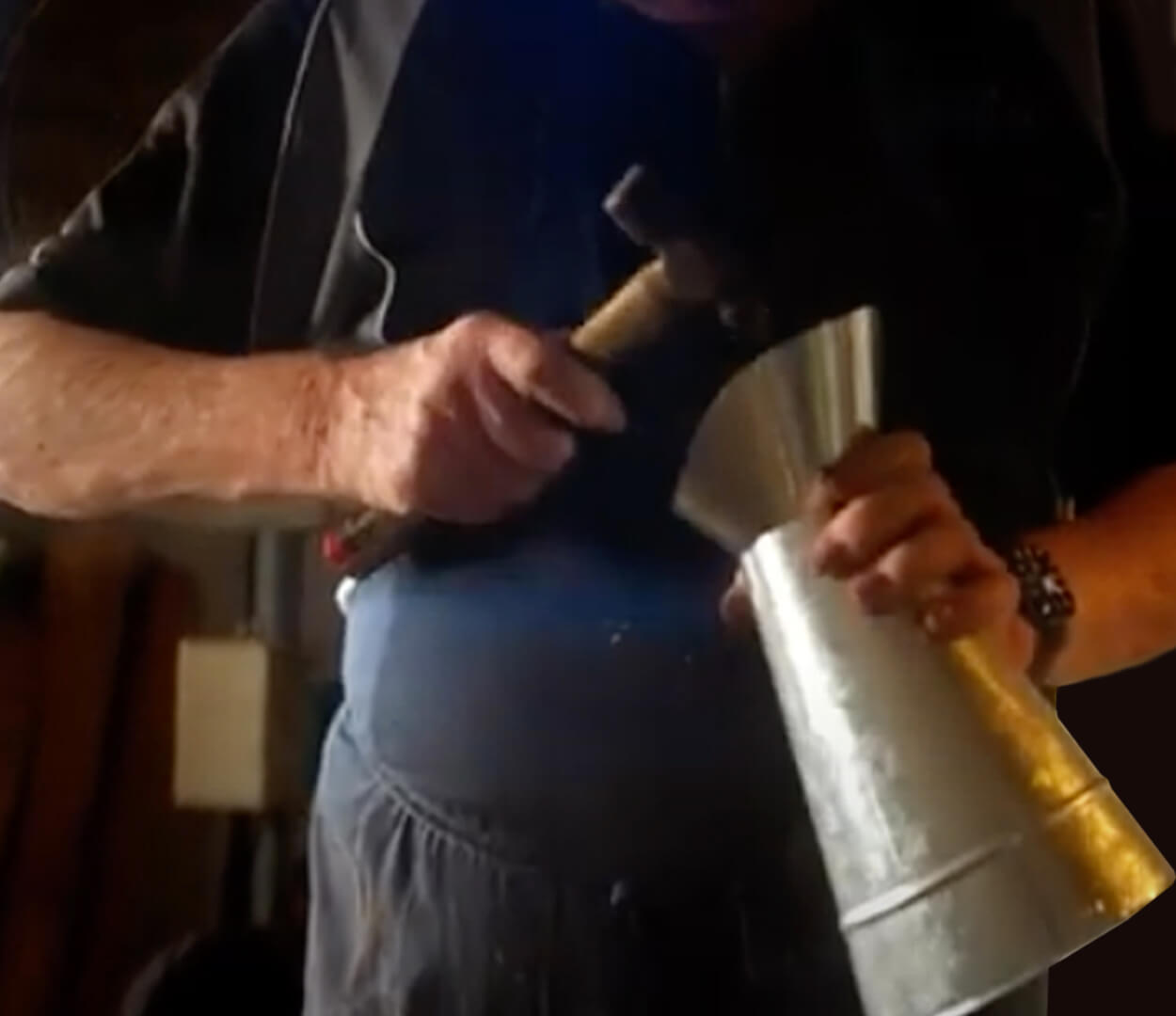With the Industrial Revolution, in early 18th century, came the ready availability of affordable sheet metal. Tinsmithing flourished with travelling tinkers supplying basic but essential wares – pots and pans, lanterns and candle lamps, tubs and buckets – to miners, farmers and settlers as they journeyed further and further afield. Tin utensils soon became as common in everyday lives as plastic is today.
Rebecca Morgan is one of the very few tinsmiths in Australia today, proudly committed to keep this almost forgotten craft alive. From buckets to watering cans, coffee pots to models of Ned Kelly and a range of animals, birds and bees for letterboxes, Rebecca Morgan has hammered, rolled, bent and twisted tin to create quality, long-lasting functional – and beautiful – pieces.
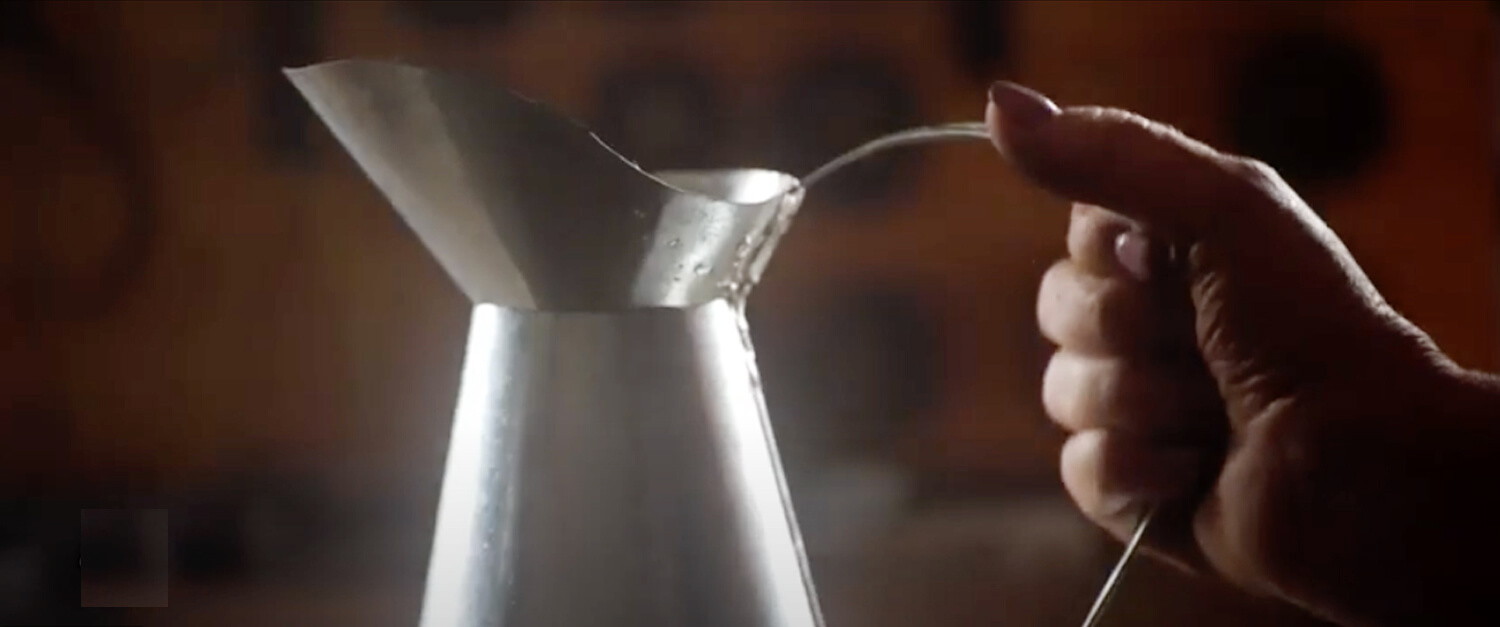
A teacher of metalsmithing, Industrial Technology & Design for over 30 years, Rebecca decided on a career change, and began taking her metalsmithing knowledge to the markets, travelling from market to market as the original tinkers used to do. In 2018, to further develop and hone her skills, she applied for, and was granted, a covetted Winston Churchill Memorial Fellowship which enabled her to travel to Ireland (the home of the original ‘tinkers’), the UK & Wales, Canada and the USA to study and bring back the tinsmithing knowledge she had acquired. Her journey began in London, where tinsmithing started over 600 years ago, in a little place called Crooked Lane. Those early tinsmiths used to get their tinplate from the old London Bridge Docks, brought in from Europe, take it back to Crooked Lane to make their wares – initially called Crooked Lane Ware, later simply tinplate ware.
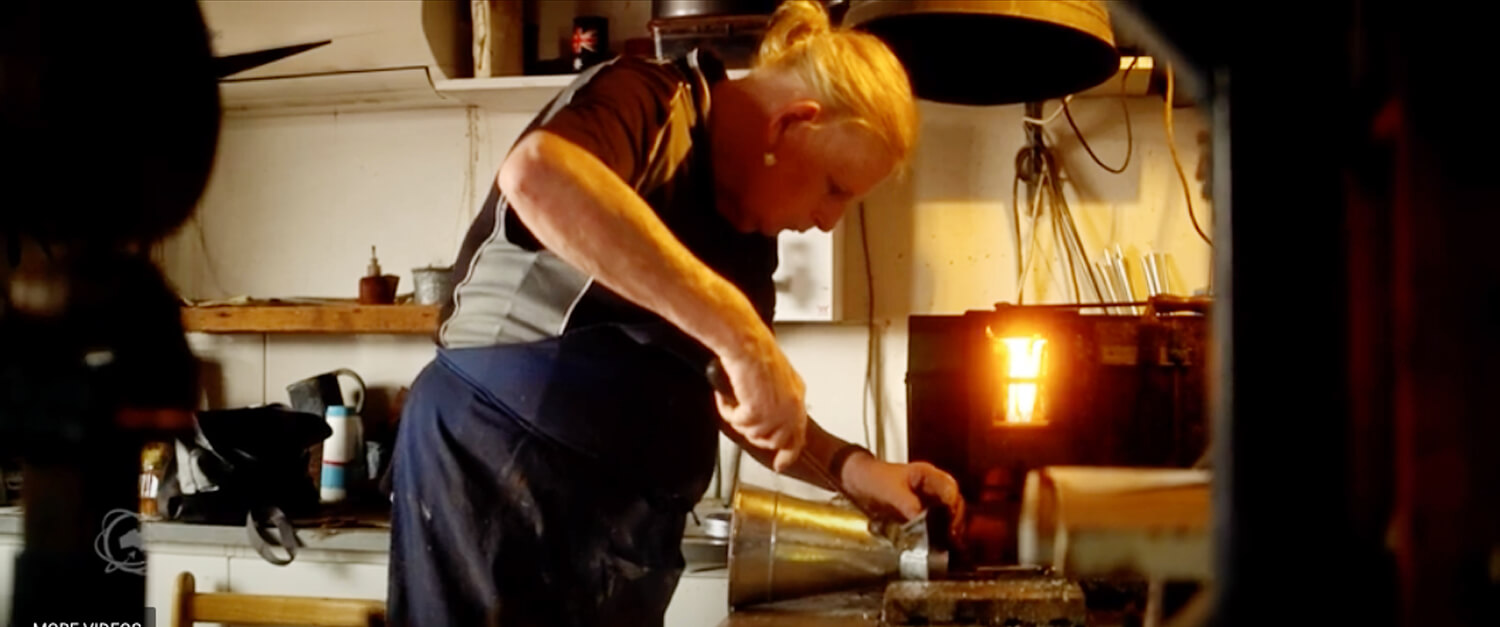
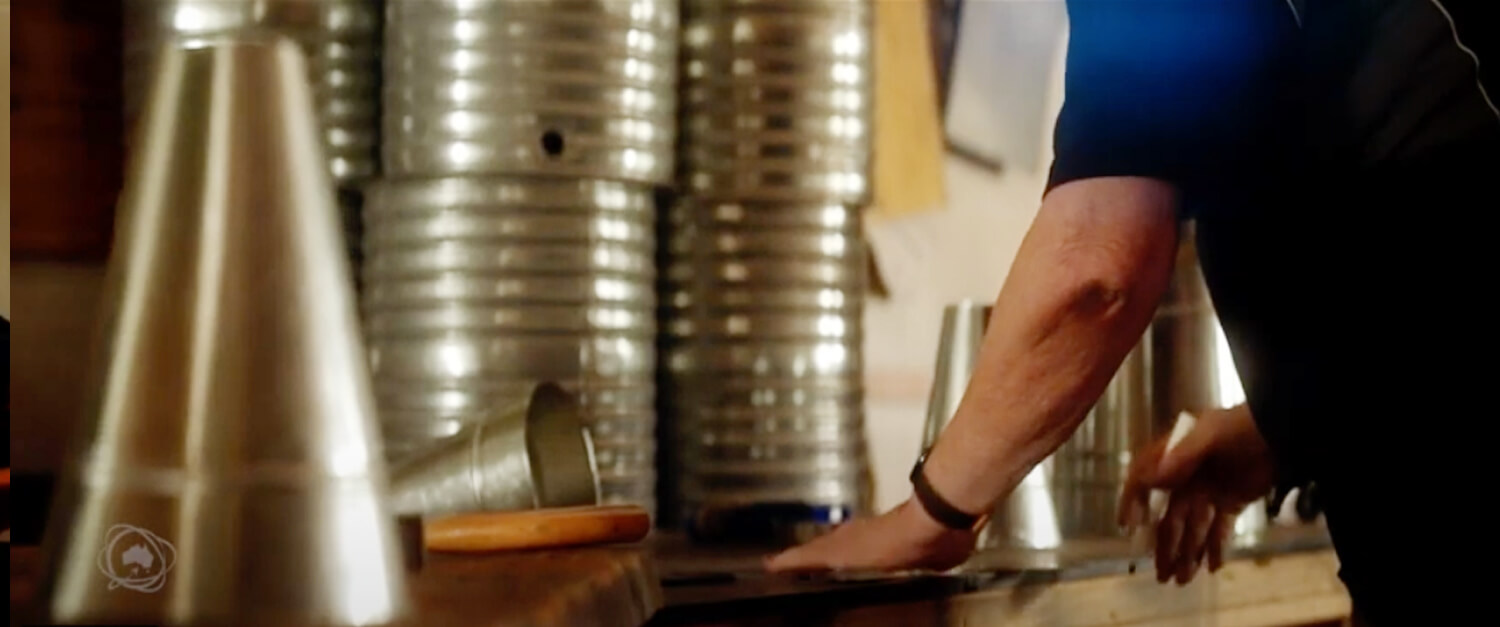
“So I got to London. The first place I needed to be was Bimingham, to a reconstructed village. For 2 weeks, I was a tinsmith in their old tinsmith shop.They taught me how to use tinplate, which I hadn’t used very much, how to do soldering their way, which is a lot different to our soldering” Rebecca said “then I went to Wales, looking for the home of the last tinsmith in 1968. And it was magic……. Yes, I get cuts all over me, but generally I like the feel of the tin, how it shapes and folds, how it can become elastic…… I came back with the knowledge that I’m making stuff that not many peope in the world are doing. We’re still in the Industrial Revolution here in my shop, making things by hand and mainly with anvils.”
According to Rebecca’s Fellowship report, there are no grassroot tinsmiths throughout England, Ireland or Wales and less than 40 in the USA and Canada.
Rebecca has been passionate about tinsmithing for nearly 50 years. In her hands, this much-valued skill will continue to have a long life. She is dedicated to sharing her skills with the next generation of tinsmiths.
Rebecca is available for workshops and commissions.
rebeccamorgan102@gmail.com
Video: www.churchilltrust.com.au/news_item/the-art-of-tinsmithing-with-rebecca-morgan/
